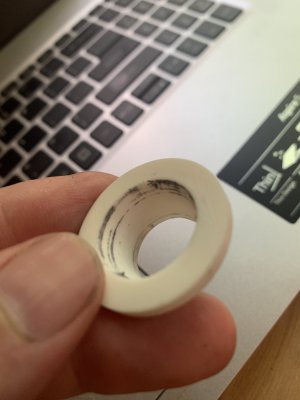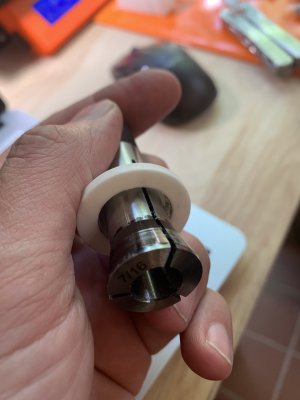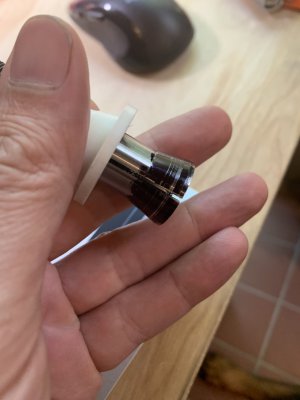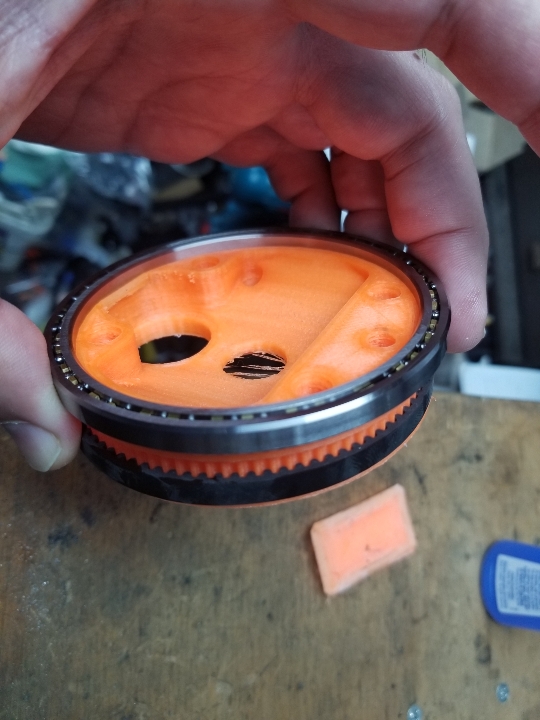- Joined
- May 3, 2020
- Messages
- 229
Firstram, thanks for stopping by. Southport... I've been down that way a few times. You're near my favorite donut shop---Wake and Bake, in Carolina Beach.
Back to the irregularly scheduled show... I made some taper adapters on the 3d-McPrinter. The gray-haired machists don't even bother to cluck at this contrivance. But I'm not a real machinist so it's allowed. Turns out that the printer struggles with a fine taper. It like a low-resolution monitor or an apprentice coil-pot maker. The trouble is the plastic-extruder nozzle diameter. It produces a bead of plastic that is 16 thou in diameter which is a giant step-over in an application like this. Normally a small step-over can be used but the taper is on both sides and the distance from one wall to another is small. A thick part would be able to take up the difference between the outer shells.
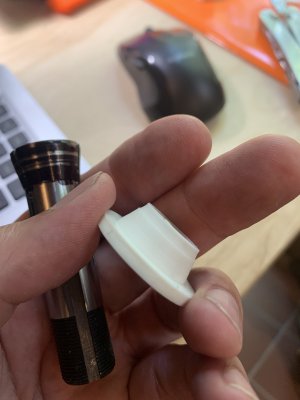
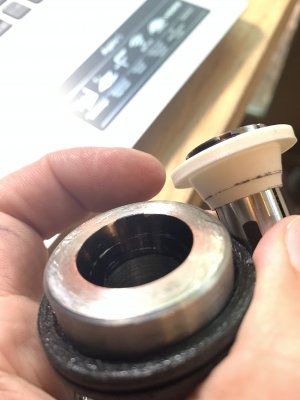
Just to get an idea of the bearing, I marked up the collet and spindle. The bearing is 100% on the discontinuity discussed above.
Did the same procedure for the low-profile collet. Similar issues. Also, plastics can grow or shrink a bit. There's a scaling factor in the software. When I was making a grease seal for the spindle nose (a future post) I had to correct for shrinkage of 2.4% when printing with PolyFlex TPU95. I didn't make any adjustments for these parts because these are simply visualization aids and not real parts.
I probably will try the plastic adapters in the mill. I had an amazing experience with 1-1/2" dimple dies in a 20-ga stainless pan. The dies were 3D printed PLA. These are ABS, which is actually not as good as PLA in compression. I think PLA has E = 350 ksi and ABS is half of that. Steel has E = 31,000 ksi. Silly thought it may be, I'm curious how well it will work. There's a video of a kid who made a weird Morse taper collet out of PLA and ran a fly cutter in it. Watch and cringe.
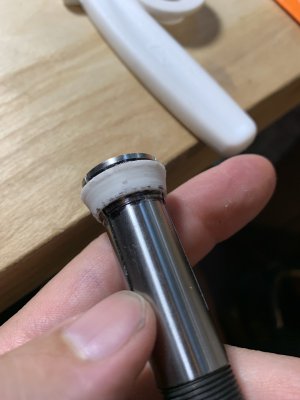
Still thinking about how to machine the ID of the adapter in steel. The OD might not be so bad. But if the outside is tapered, there's only a thin flange to hold onto...
Back to the irregularly scheduled show... I made some taper adapters on the 3d-McPrinter. The gray-haired machists don't even bother to cluck at this contrivance. But I'm not a real machinist so it's allowed. Turns out that the printer struggles with a fine taper. It like a low-resolution monitor or an apprentice coil-pot maker. The trouble is the plastic-extruder nozzle diameter. It produces a bead of plastic that is 16 thou in diameter which is a giant step-over in an application like this. Normally a small step-over can be used but the taper is on both sides and the distance from one wall to another is small. A thick part would be able to take up the difference between the outer shells.


Just to get an idea of the bearing, I marked up the collet and spindle. The bearing is 100% on the discontinuity discussed above.
Did the same procedure for the low-profile collet. Similar issues. Also, plastics can grow or shrink a bit. There's a scaling factor in the software. When I was making a grease seal for the spindle nose (a future post) I had to correct for shrinkage of 2.4% when printing with PolyFlex TPU95. I didn't make any adjustments for these parts because these are simply visualization aids and not real parts.
I probably will try the plastic adapters in the mill. I had an amazing experience with 1-1/2" dimple dies in a 20-ga stainless pan. The dies were 3D printed PLA. These are ABS, which is actually not as good as PLA in compression. I think PLA has E = 350 ksi and ABS is half of that. Steel has E = 31,000 ksi. Silly thought it may be, I'm curious how well it will work. There's a video of a kid who made a weird Morse taper collet out of PLA and ran a fly cutter in it. Watch and cringe.

Still thinking about how to machine the ID of the adapter in steel. The OD might not be so bad. But if the outside is tapered, there's only a thin flange to hold onto...


